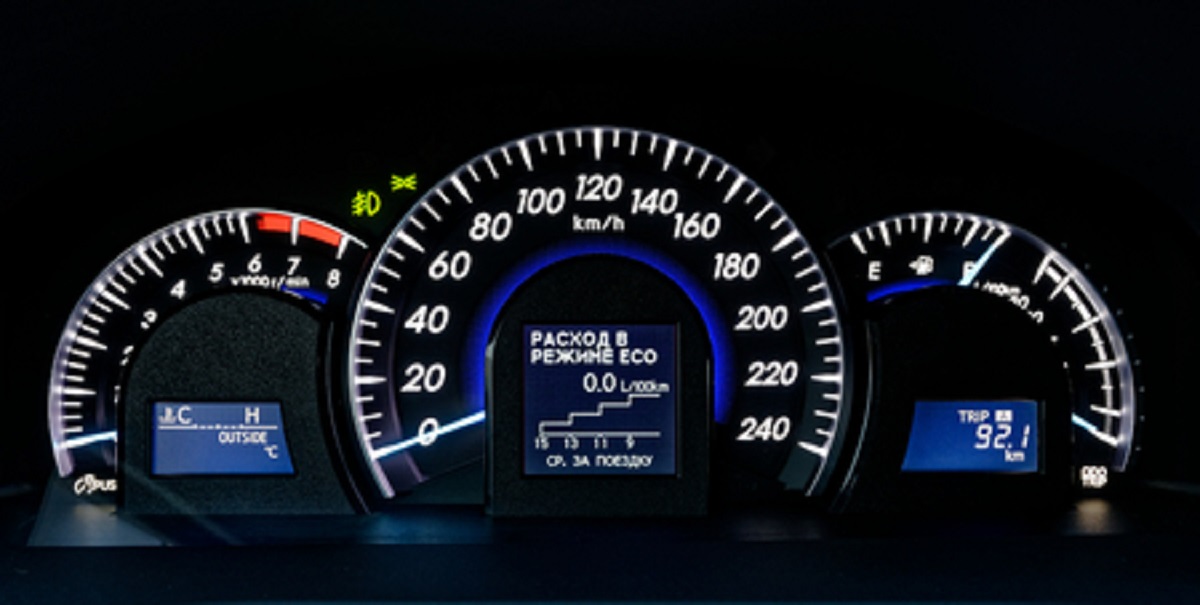The gauges you see on a dashboard can help reveal a vehicle’s relative health while also indicating how it’s operating. Many gauges quantify self-explanatory diagnostics whereas others measure more obscure facets of the vehicle’s condition. Admittedly, enough experience owning and operating a vehicle can make these gauges easier to read (you can also check your owner’s manual), but even veteran drivers can struggle to comprehend some of the gauges in their vehicle, especially since the functions of individual gauges can differ between vehicles. To make this task easier, here is a quick directory that will hopefully help explain common dashboard gauges and alleviate confusion, ensuring a healthier, longer-lasting ride.
Speedometer
Of every dashboard gauge available, the speedometer is by far the easiest to identify, measuring a vehicle’s speed at any given moment in miles per hour (mph) as well as kilometers per hour (km/h). Speedometer readings are reasonably accurate accounts for a vehicle’s speed. With modern vehicles, speed is measured via an electronic sensor, which transfers the car’s wheel rotation rate to the speedometer directly, displaying the reading on the dash.
Fuel Gauge
Another easy gauge to identify would be the fuel gauge, which indicates how much remaining fuel you have in your gas tank. Once your fuel reaches near-empty levels, most vehicles indicate this with a warning shaped like a gas pump. While this differs between different makes and models, fuel gauges aren’t barometers for the exact amount of fuel in your tank. Drivers shouldn’t keep allowing their fuel to become severely low before refueling, as fuel pumps are immersed in fuel and gasoline acts like a coolant. When your fuel gets low, the pump becomes exposed to air and may overheat, resulting possible fuel pump failure—hence why your fuel gauge must be monitored constantly.
Tachometer
The tachometer calculates an engine’s speed as it rotates, measuring with revolutions per minute (RPM). When this gauge reaches extremely high levels, often indicated with red, this can lead to complications with your vehicle. Because the tachometer is related to fuel economy and power output, it should be watched closely. Oftentimes, the higher your RPM reading, the greater your fuel consumption and engine power output. Consistent low RPM levels indicate an engine is functioning at optimal levels, resulting in improved fuel mileage.
Temperature Lamp/Gauge
Some vehicle dashboards come with temperature gauges while others simply display a thermometer-shaped warning light to indicate an extremely raised engine temperature. This gauge measures an engine’s coolant temperature, and when the coolant temperature light turns on or the gauge hits red, this indicates the coolant temp has reached a very high level. If you continually operate a vehicle with these warning signs engaged, your engine may be greatly damaged. You should stop the vehicle in order to cool your engine. If this doesn’t alleviate the problem, the vehicle needs service from a professional.
Think you or someone you know is in need of Behind the Wheel Training? Training Wheels is a Somers Point driving school specializing in teaching new teen drivers how to stay safe on the road. For more information on our lessons, please click here.
Copyright: classicua / 123RF Stock Photo

